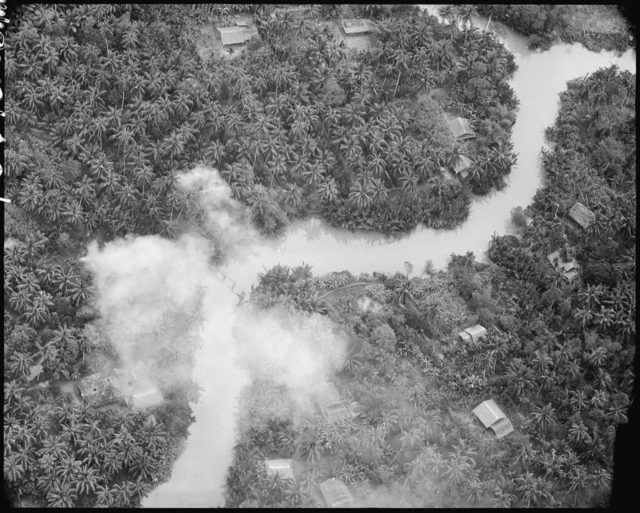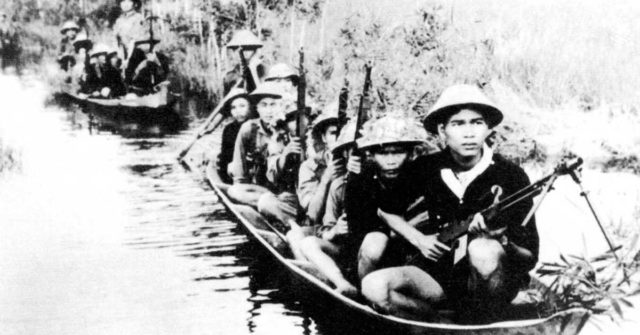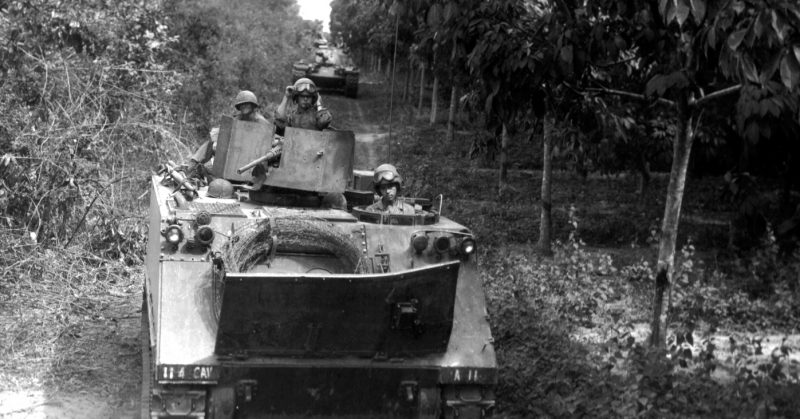The US Army’s First and 25th Infantry Divisions began Operation Cedar Falls in January of 1967. It was an offensive to take out the strongholds of communism in the “Iron Triangle” northwest of Saigon. Vo Thi Mo, aged 20, was prepared for them.
She had been fighting against the US troops and the Army of the Republic of Vietnam (ARVN) since she was 13. She helped build the tunnel system that the National Liberation Front (the Vietcong) used for their barracks, command center and communications network.
In 1967, she was a “deputy of hamlet combat.” This month marks the 50th anniversary of the battle in which she led three commando squadrons against one of the 25th Divisions battalions.
Mo is now 70 and still living in Cu Chi. She’d never attended a military school. Her entire military education occurred on the battlefield.
The fact that poorly equipped and poorly supplied forces of the Vietcong were able to hold off the continued attacks of the US tanks and helicopters shows the resilience, adaptability, and tenacity of the Vietcong fighters like Mo. It was this ability to survive that formed their strategy for the war.
An 81-year-old former regiment commander is one of the few survivors of a division thought to have been one of the toughest in the Vietcong. He still shudders to remember Cedar Falls even fifty years later.
The US fired bomb and rocket attacks into the Iron Triangle area from B-52s, jet fighters, helicopters and heavy artillery. Then the US tanks and troops came in to destroy the remaining Vietcong defenses. According to the retired colonel, the US forces razed Cu Chi, Ben Cat, and Ben Suc – the villages at the perimeter of the Iron Triangle – like they were peeling them off the earth, so the Vietcong refer to the operation as Peeling the Shell of the Earth.
The US succeeded in destroying the Vietcong bases and supplies while establishing a secure perimeter for themselves in the northwest of Saigon. But they failed to destroy the Vietcong leadership.
Starvation was a chief concern of the Vietcong as discovered in 350,000 documents the Americans recovered during the operation.
Many of the Vietcong escaped through the tunnels and hid along the canal banks where they had learned from experience the South Vietnamese would not check closely.
But escape was often fleeting, and the Saigon River became a river full of death with corpses floating all along the water.

By the end of the operation, the Americans totaled 750 Vietcong killed, with 72 Americans and 11 South Vietnamese.
The communist propaganda of the time stated that the Vietcong forces had stood up to the 30,000 US And South Vietnamese troops. Actually, the Vietcong sent small guerilla squads against their enemy and saved their main forces from direct confrontation with the Americans.
The main forces couldn’t confront the Americans; they didn’t have enough weapons. So they hid in bamboo hedges when the US conducted search and destroy missions.
But the guerrillas were effective in countering the US offensives, especially in the area around Cu Chi.
Mo was armed with more than experience. The communists had people working in the 25th Division’s base, and they were able to get her the details of the American offensive.
She knew that her 30 fighters were no match for the US forces in conventional warfare. Instead, they developed defenses, including a locally designed anti-tank mine that was more effective than Soviet mines. The Vietcong mines had a remotely activated lever that threw the mine against the tank. The mines themselves were made from explosives found in American shells that failed to detonate. The explosives were placed in pails and machine-gun cans.
After the first line of mine defenses came the anti-tank ditch, spike-traps and then bamboo barriers before the Vietcong tunnels. The tanks couldn’t get past the mines, and the trench and the troops were scared to cross the spike traps. Whenever the Americans bombed them, they hid in the tunnels. Whenever they brought in the tanks, the Vietcong came out and sniped them.

One of the reasons she fought so hard was that, unknown to the Americans, there was a regional military command and a local Communist Party cell in her hamlet. She was able to save her leadership until the operation ended, The New York Times reported.
Cedar Falls changed the way the Vietcong fought the rest of the war. They organized by hamlet, village, commune and district units. Weapons were distributed at the hamlet level so that the enemy could not destroy their supplies and all the soldiers had the weapons they needed.
